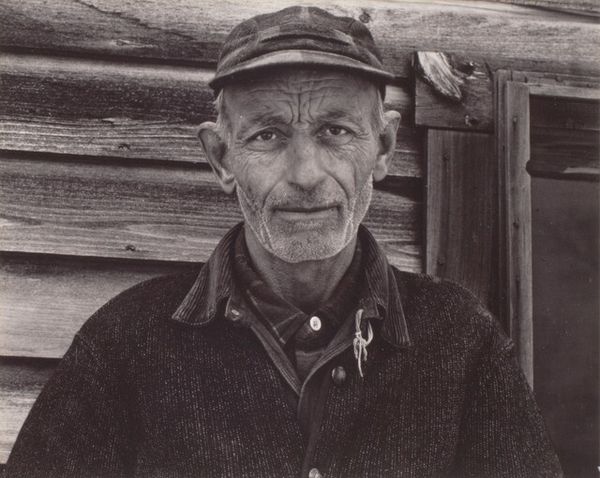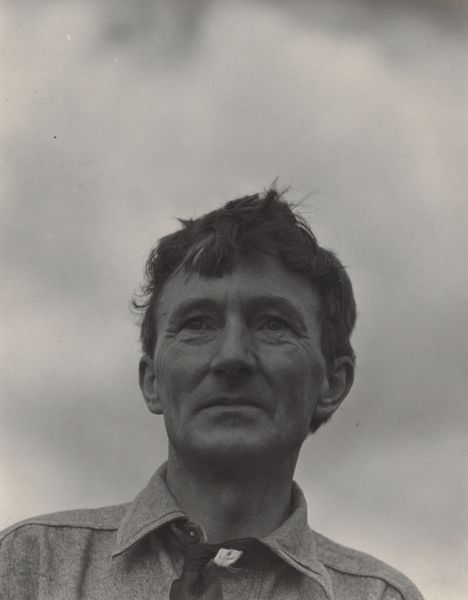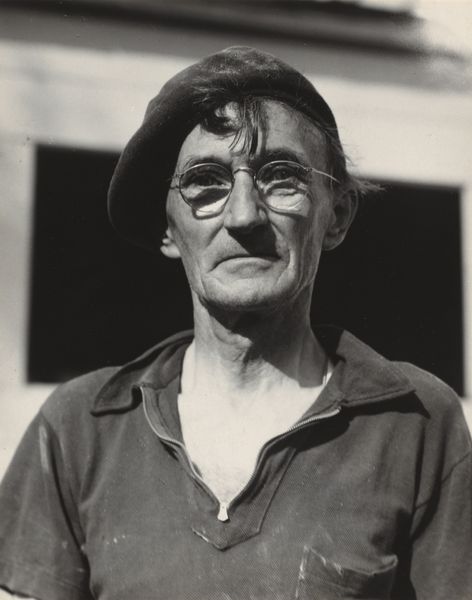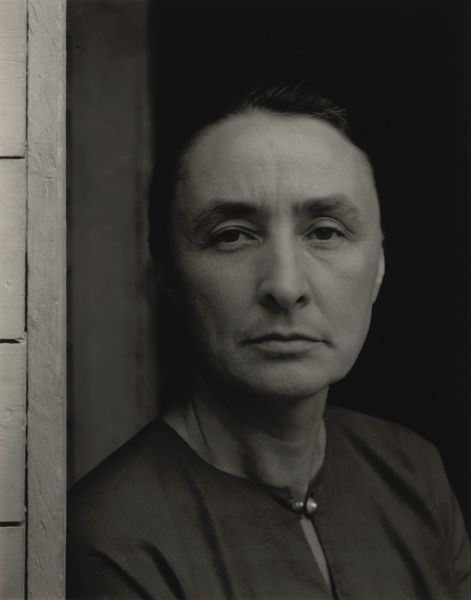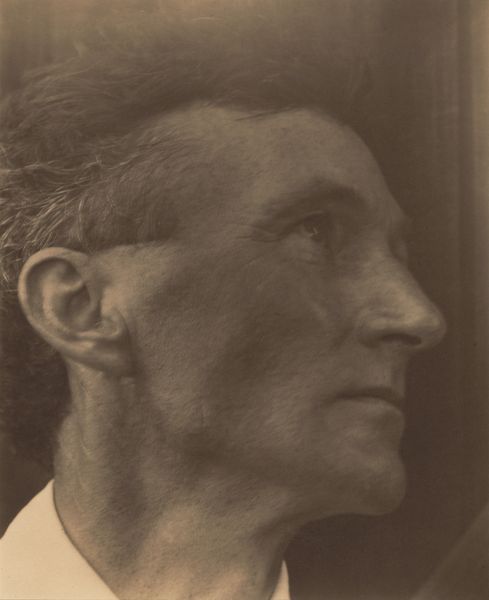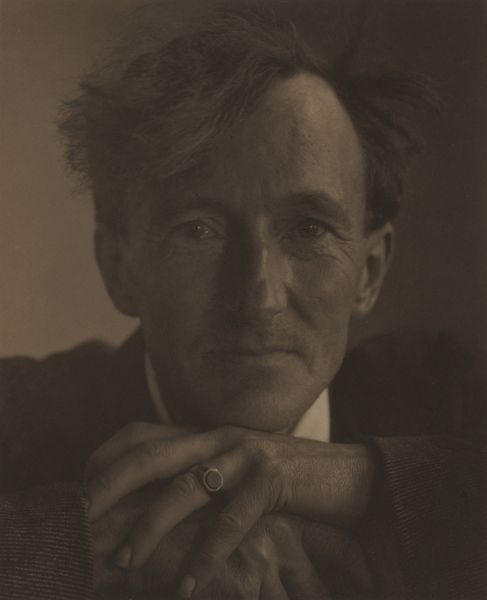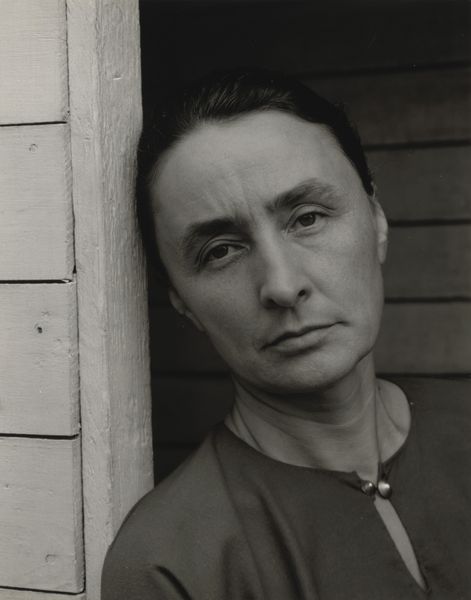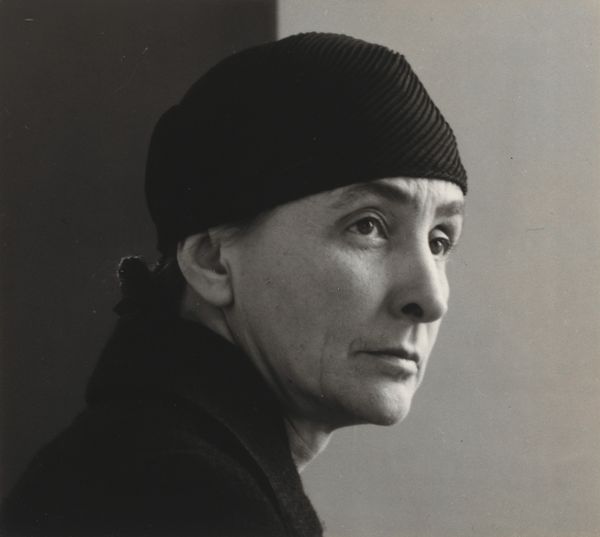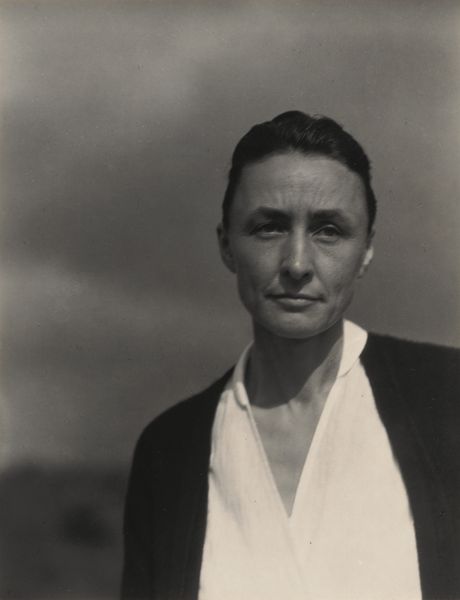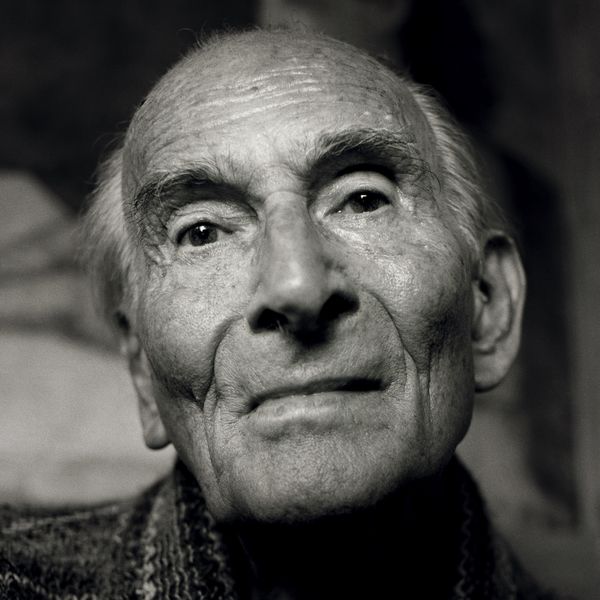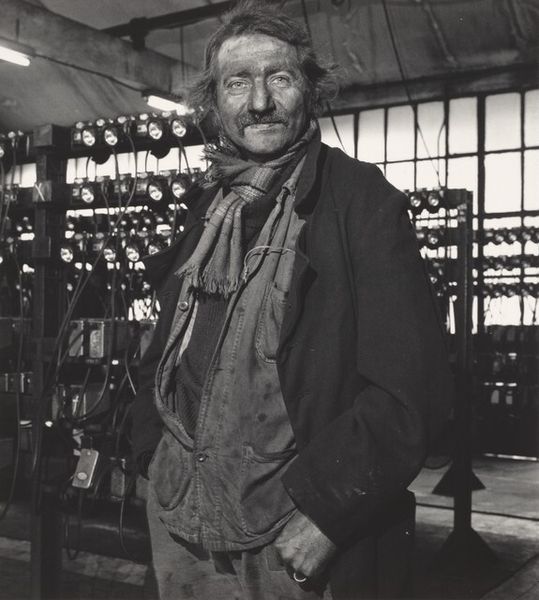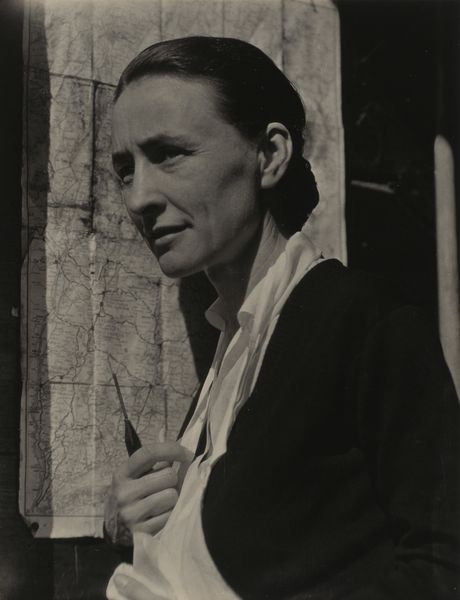
photography, gelatin-silver-print
#
portrait
#
black and white photography
#
photography
#
historical photography
#
black and white
#
gelatin-silver-print
#
realism
Dimensions: overall: 11.7 x 14.9 cm (4 5/8 x 5 7/8 in.)
Copyright: National Gallery of Art: CC0 1.0
Curator: This gelatin-silver print, created by Paul Strand in 1954, is titled "Alex MacDonald, South Uist, Hebrides". Editor: The face strikes me immediately – weathered and deeply etched. It feels almost archetypal, embodying a specific type of rural stoicism. Curator: Precisely. Strand worked extensively documenting rural communities. I'm particularly drawn to the materiality visible in the photograph – the rough texture of MacDonald's tweed jacket, the chipped paint on the clapboard behind him. The materials speak to a life closely connected to labor and place. Editor: I see so much in that face, and also in his clothes—he has an argyle sweater but a heavy jacket as though he is dressed for utility. His slightly turned gaze feels both wary and inviting, like he has stories etched into his being. Curator: He does. MacDonald was a crofter, a tenant farmer. Look at the interplay of the textures; the gelatin-silver process, allows for such rich tonal variation, which underscores those distinctions between, say, the cloth and the face. The clothing also performs class. Editor: Absolutely. I also wonder about the poster behind him. Partially obscured as it is, it presents us with layers—it feels like the past overlaid on the present—another symbol of how memory and lived experience shape identity, especially in relation to one's location. Curator: The placement of that poster, likely advertising some tool or trade, draws attention to the economic realities structuring MacDonald’s existence. Consider the photographer's choices here; gelatin silver was widely available then. He consciously selected a process tied to accessibility. This echoes Strand's political commitment. Editor: Indeed. Seeing these details prompts considerations on time, memory, place. The image itself is a artifact carrying the weight of a particular moment and now offering echoes that reverberate in our own time and concerns. Curator: Well, from considering both its composition, process and symbolism, I would agree. It compels you to reflect on how these forms relate to what they stand for, from past into the present. Editor: It's more than a picture, it is an opening into ways to understand who we are, in our places and memories.
Comments
No comments
Be the first to comment and join the conversation on the ultimate creative platform.
